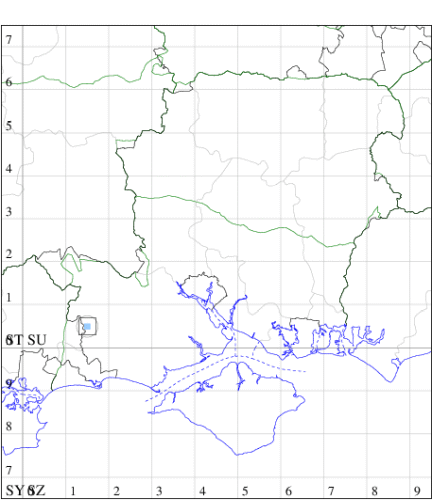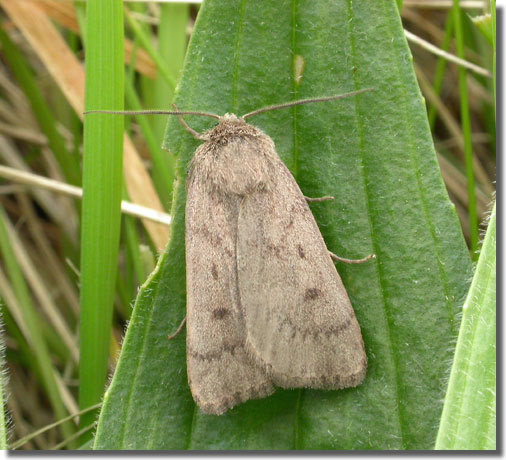Marsh Moth
Athetis pallustris
Checklist Number73.103 [B&F: 2392]
Verification
Record will require further evidence, at least a good photograph, unless CMR is aware recorder has confidence in identification
A rare Red Data Book species, in damp meadows in parts of north-eastern England, predominantly coastal, a priority species under the UK Biodiversity Action Plan. Formerly there were populations in Huntingdonshire, Cambridgeshire, Norfolk, Suffolk, Yorkshire and Cumbria, but the moth has not been seen in any of these counties since 1970. It is now confined to the coastal belt of Lincolnshire where it occurs on two nature reserves and possibly two additional sites. In Hampshire there is one ancient record of this species, a female taken flying by day at Ringwood in 1870. Not recorded from the Isle of Wight to date. Wingspan male 26-34 mm, female 18-22 mm. There is no other noctuid in Britain which bears any resemblance to Marsh Moth, however the pyralid Large Tabby Aglossa pinguinalis is somewhat similar in shape and texture, but the forewing is much more heavily irrorate dark fuscous, there are usually four rather broad cross-lines which are distinct at least towards the costa, the reniform stigma when present is closer to the antemedian line than to the postmedian line, and the hindwing has a pale postmedian band (MBGBI Vol 10). Larva feeds on Ribwort Plantain and Meadowsweet.


VC11 South Hampshire
| Site | Date | Quantity | Recorder | Stage |
|---|---|---|---|---|
| Ringwood (SU10) | 1870 | one | Unknown | Adult |
| NF (SU10) | 1870 | - | Anon | - |

